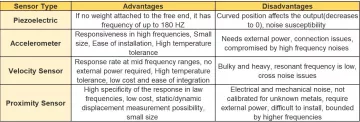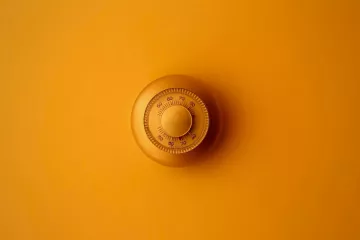Vibration Measurement Explained
What vibration is, and why it is necessary to measure it
Vibration can be defined as the oscillating motion about a reference position of a subject that vibrates. The number of times a complete motion cycle takes place during the period of a second is called the frequency and is measured in hertz (Hz).
Be it an industrial or a consumer accessible everyday setting – for rotary equipment, or for especially safety-critical products, vibrations are either a sign of an issue or a critical component of their normal operation. For both of those cases, a proper vibration monitoring is a crucial part for positive longevity.
Nowadays, for the most part, isolation and reduction of vibrations is rather an important expectation from mechanical equipment, as unnecessary vibrations is an unnecessarily wasted physical energy.
It is rare that an unnecessary vibration (especially a small vibration), even if continuous for a short period of time – will cause a breakdown of the system right away. Sure, it wastes energy, it is an anomaly, but because the i.e. machine keeps getting the job done – usually these vibrations are overlooked. This, of course, is a dangerous game to play! Like we already mentioned above – these abnormal vibrations are usually a symptom of a larger issue and cause even larger ones if ignored.
Some of the most common causes of vibrations in mechanical equipment for example, may be the wear and tear of the details, loose connections of the components, imbalance of the weight distribution wherever it is located, angular/parallel misalignment (especially in machines where parallel alignment of some details are crucial, like motor shafts, yet they are not properly aligned, or are aligned but not properly connected).
The vibration monitoring is just as critical in civil engineering, as a necessity for Structural Health Monitoring, to keep the structural integrity of the construction; as well as in safety-critical equipment such as Rechargeable Batteries which can potentially get physical abuse from vibrating surroundings or lose energy if placed in an overly vibrating environment (especially from the battery connections).
Vibration related issues are common for a number of applications, and to identify the priority of the machines to provide maintenance, after vibration-caused(and other) issues, answer to the following questions:
- Does the system affect human or environmental safety?
- Does the system require expensive, lengthy, or difficult repairs?
- Is the system critical to production or general plant operations?
- Does the system frequently get damaged?
- Does the system get evaluation on its reliability?
The most common product trends within Vibration Sensing industry
Depending on the required frequency range of the measurements – there are usually velocity or acceleration as monitoring parameters of the monitoring system to choose from, and in terms of the actual productivity levels of Vibration Sensors – we can identify the systems that
- have single function of monitoring a i.e a detail in the machine (detects i.e structural health of belt drives of a rotary equipment)
- are smartified versions of the latter: usually monitors both velocity and acceleration, thus providing enough information to prove the possible reasons causing the abnormal vibrations (i.e NDT of cracks within a structure)
- data analytics: this can be a software solution that showcases the failures occurring in the system, by analyzing the data coming from the set of conventional sensor
Some of the more common types of sensors used for Vibration analysis are Piezoelectric, Accelerometer, Velocity and Proximity sensors. These are truly useful for a vast amount of users, yet each have their specific limitations – which shall be considered before the introduction into especially safety critical applications.

Additionally, there aren’t currently available solutions, developed and ready enough for the mass market access – that can provide highly accurate real-time information on an applications vibration, while being attached into a harsh environment, or even onto a curved surface.
Sure – the available systems, especially the ones mentioned above, offer much higher frequency than an average application is looking for. However, what if the application is not average, and the required information is not to confirm the existence of some vibration? What if the tiniest frequency change – will affect perception and whole possibilities with the system (i.e. smartification of rotary equipment affecting changes of the whole industry into more efficient, effective way of work with much less waste both for the business and the environment).
Novel approach to Vibration sensing
We, at RVmagnetics recognize that frequency of vibration measurement and the accuracy of the data is just as important as the scalability of the system into the mass market. Otherwise, having a unique and exceptional system would be good on paper, but would lack practical added value for the market.
This is why, after more than 25 years of research and development, a unique sensor has been developed. The sensor in question is the MicroWire, and it provides real-time, highly accurate signal to the sensing system with no contact or wiring needed. This data is also reliable, easy to store, and can be processed in large distances (through Wifi, Sigfox, Bluetooth, etc.).
The MicroWire sensing technology we introduce, in addition to the other physical quantities, also provides vibration measurement, with frequency of up to 10.000×/sec. It is thin, flexible and light like human hair, and due to the glass coating – also resistance to harsh chemical environments – making it possible to introduce the sensor not only on curved surfaces, but also directly inside an application from where vibration measurements are required (i.e. on a shaft of a motor).
We do not only measure the amplitude of the vibrations, but our MicroWire sensor also allows to perform Fourier analysis and to give distribution of different vibrations on the application, with respective amplitudes (power spectrum of Fourier transformation).
Using this approach, in addition to the proper vibration measurements, it is also possible to distinguish the origins of vibrations – which is utterly useful for predictive and preventive analyses.
Most importantly for the market however, is our approach to the Research & Development of the system for the vibration measurements. RVmagnetics is essentially an R&D company, so we specifically develop the sensor and the sensing system by custom requirements of our clients and partners. In the mass manufacturing stage, our system is designed to be largely cost-competitive to other sensors, and, what is more important – custom-made to exactly match the special demand such as the frequency of vibrations needed to reflect, data storage, physical design of the sensor, and the sensing system as an elegant solution in the physical space, etc.
The scalability and ease of production of our MicroWires makes it exciting to tackle the vibration measurement market, in ways that haven’t been explored just yet.




